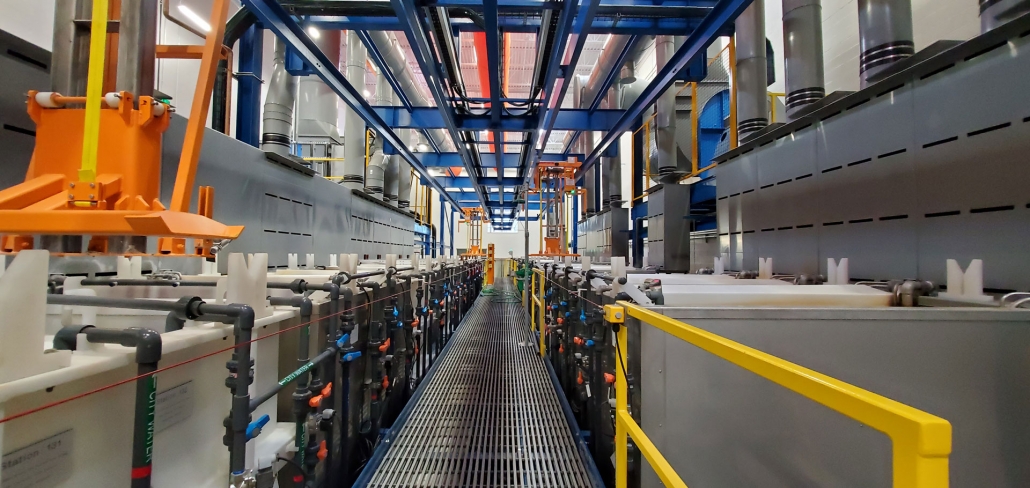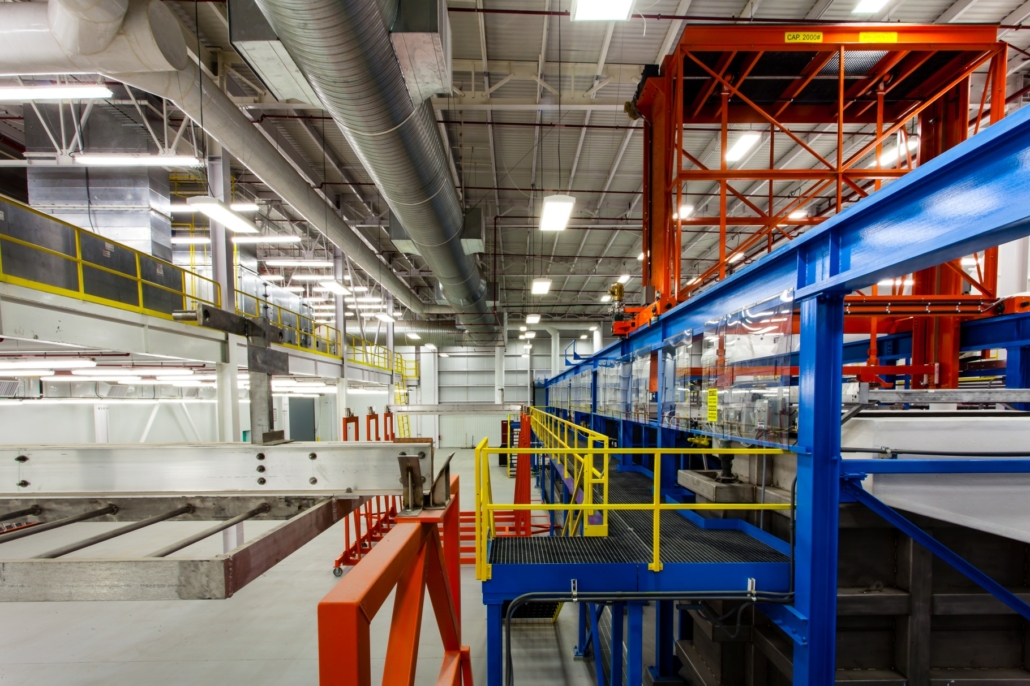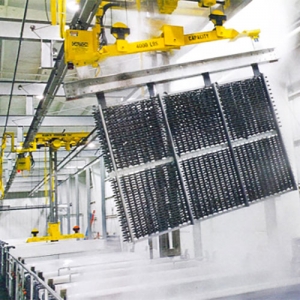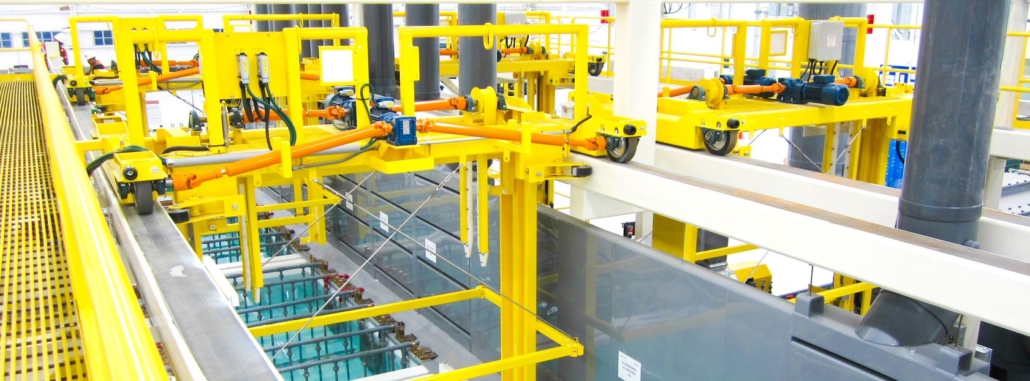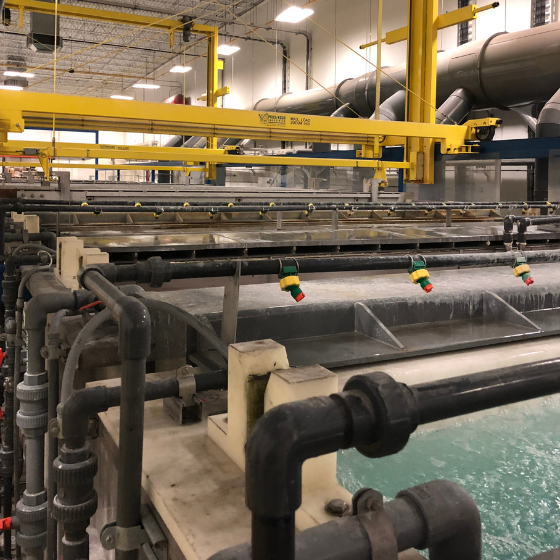What are the Benefits of Anodizing Equipment?
Anodizing is a controlled electrochemical process that thickens and strengthens the natural oxide layer on metal surfaces, most commonly aluminum. Enhancing this oxide layer improves durability, increases surface hardness, and maximizes corrosion resistance, making anodizing beneficial for equipment used under demanding conditions.
In this article, we’ll explore the major benefits of anodizing to help you understand why it’s so important for industrial and commercial equipment.
1. Enhanced Corrosion Resistance
Anodizing enhances corrosion resistance by creating a thick, durable oxide layer on the surface of a metal. This process is often used on aluminum, but you can also anodize stainless steel, titanium, magnesium and aluminum alloys. One of the major benefits of anodizing is that the oxide layer is integrated into the metal surface instead of merely placed on top of it, so it resists chipping, cracking, and corrosion.
The protective layer created by anodizing is especially helpful in environments where metal regularly comes into contact with moisture, salt, or chemicals. It also guards against damage caused by extreme temperature fluctuations, making anodizing suitable for marine facilities and manufacturing plants. By preventing surface deterioration, anodizing reduces the cost of performing repairs and replacing worn parts.
2. Increased Surface Hardness and Durability
Anodizing increases surface hardness by producing a crystalline oxide layer. This layer is much tougher than untreated metal, so it increases resistance to abrasions, dents, and scratches. Anodizing also slows down general wear and tear, reducing downtime associated with maintenance and repair activities. Depending on the type of anodizing you use, as well as the thickness of the oxide layer, anodized metals can almost match the hardness of tool-grade steel.
Increased durability is essential in high-demand environments, such as the aerospace, automotive, and heavy manufacturing industries. In aerospace, anodized components hold up well under tough operating conditions, making it easier to comply with strict safety regulations. Anodizing is also critical for protecting aircraft components from high temperatures.
Auto parts are exposed to rain, sleet, snow, and high levels of heat. Without anodizing, these components would be subject to rapid wear and tear, resulting in increased maintenance and repair costs. Anodizing prevents rust and extends the lifespan of cars, trucks, and sport utility vehicles (SUVs). In heavy manufacturing, anodizing protects equipment from the stress of frequent handling, abrasive materials, and high levels of friction.
3. Improved Aesthetic Appeal and Color Customization
Increased durability and corrosion resistance aren’t the only benefits of anodizing. The process also improves the appearance of anodized metals, giving manufacturers more control over the look of their products. When working with untreated metals, it’s difficult to get paints, dyes, and pigments to adhere to an item’s surface. Anodizing increases porosity, allowing for deep penetration of dyes and other coloring agents.
Once the anodizing process is complete, the dye is sealed under the protective oxide layer, preventing fading and peeling. This makes anodizing helpful in any industry that relies on aesthetics. For example, some companies produce equipment customized with clients’ names, logos, and corporate color schemes. Anodizing protects this branding from premature fading. Consumer electronics companies also rely on anodizing to produce sleek-looking stereo systems, TVs, and smartphones.
4. Reduced Maintenance Requirements
Although anodizing increases the porosity of the underlying metal, the oxide layer is nonporous, so it resists dirt buildup and staining. It also prevents contaminants, including sawdust and metal shavings, from embedding themselves in anodized surfaces. This makes it possible to clean anodized metals with mild soap and water instead of having to scrub them with harsh industrial cleaners. If you have to use cleaning chemicals, you don’t have to worry about the anodized surface peeling or getting discolored.
Anodized metal is so durable that it doesn’t need regular refinishing. Over time, this reduces the cost of labor, materials, and equipment downtime. Anodizing also prevents chipping and peeling, making it critical for health care facilities, food-processing plants, and any environment where sanitation is essential. When you anodize aluminum and other metals, you get products that look good, function as expected, and hold up under even the toughest conditions.
5. Environmentally Friendly Finishing Option
Traditional painting and coating methods rely on hazardous solvents and volatile organic compounds (VOCs) to achieve the right blend of form and function. These substances release fine particulates into the atmosphere, contributing to high levels of smog in industrial areas. VOCs and solvents also pose serious health risks. Anodizing relies on chemical changes instead of harsh chemicals, so it’s an environmentally friendly alternative to traditional painting and coating processes.
Anodizing also helps manufacturers reach their sustainability goals, as it minimizes the resources used to replace damaged parts and perform routine maintenance. Over time, your company may even use less water and electricity, further reducing its environmental footprint.
Contact Koch Finishing Systems today to learn more about how we can help your company take advantage of the many benefits of anodizing.

